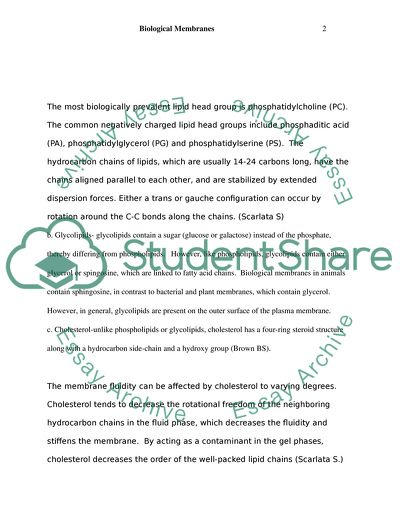Cite this document
(Components of Biological Membranes Coursework Example | Topics and Well Written Essays - 1250 words, n.d.)
Components of Biological Membranes Coursework Example | Topics and Well Written Essays - 1250 words. https://studentshare.org/biology/1703040-biological-membranes-are-a-complex-mixture-of-lipids-discus-their-chemistry-and-how-they-interact-with-membrane-proteins
Components of Biological Membranes Coursework Example | Topics and Well Written Essays - 1250 words. https://studentshare.org/biology/1703040-biological-membranes-are-a-complex-mixture-of-lipids-discus-their-chemistry-and-how-they-interact-with-membrane-proteins
(Components of Biological Membranes Coursework Example | Topics and Well Written Essays - 1250 Words)
Components of Biological Membranes Coursework Example | Topics and Well Written Essays - 1250 Words. https://studentshare.org/biology/1703040-biological-membranes-are-a-complex-mixture-of-lipids-discus-their-chemistry-and-how-they-interact-with-membrane-proteins.
Components of Biological Membranes Coursework Example | Topics and Well Written Essays - 1250 Words. https://studentshare.org/biology/1703040-biological-membranes-are-a-complex-mixture-of-lipids-discus-their-chemistry-and-how-they-interact-with-membrane-proteins.
“Components of Biological Membranes Coursework Example | Topics and Well Written Essays - 1250 Words”. https://studentshare.org/biology/1703040-biological-membranes-are-a-complex-mixture-of-lipids-discus-their-chemistry-and-how-they-interact-with-membrane-proteins.


